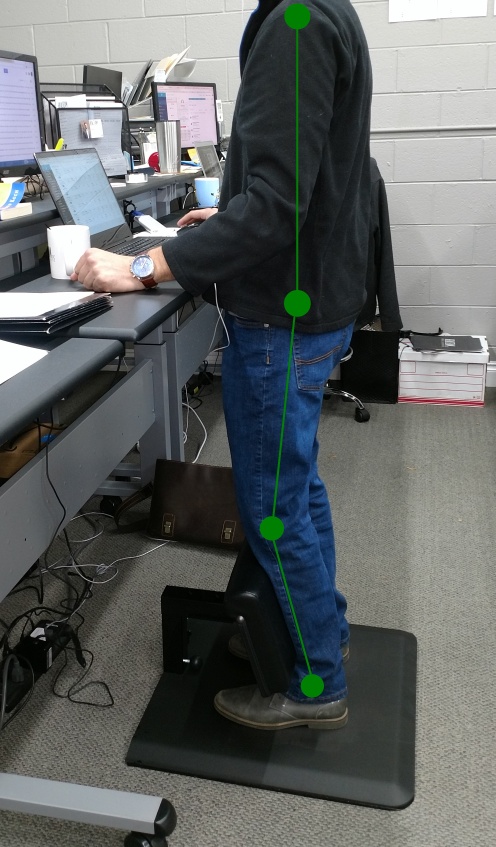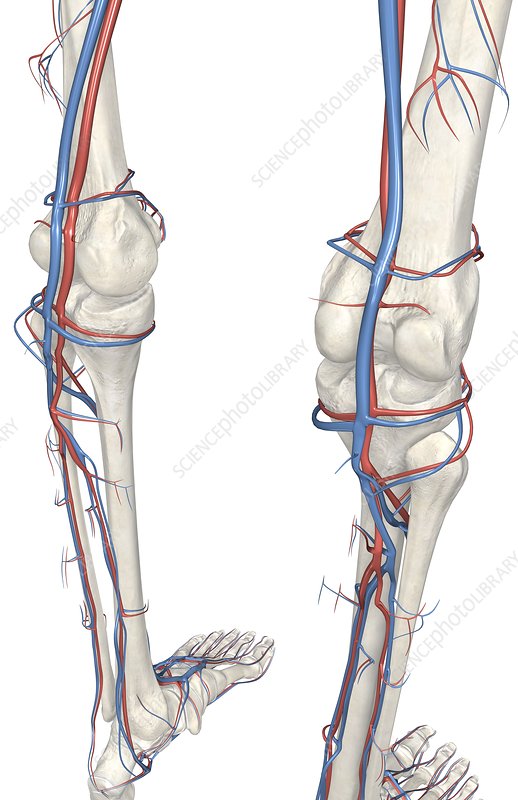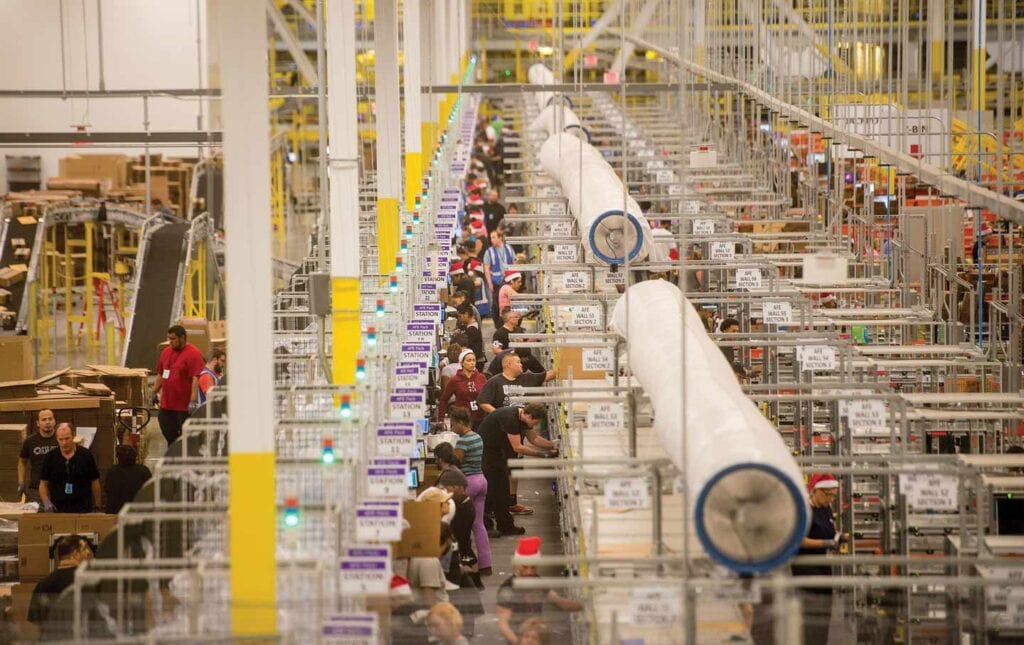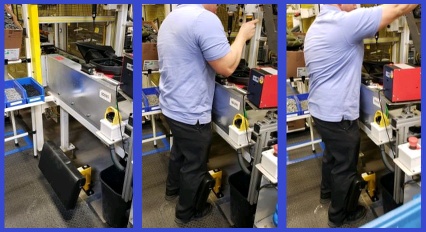The two problems facing most workers today are not even recognized by experts and professionals. In fact, in one case, the recommendations can be detrimental. But what makes what experts think are “little problems”, become BIG PROBLEMS? Pretty simple really, they missed these.
Since the dawn of the industrial revolution, humans went from laborious jobs like farming, building and other labor intensive jobs, to assembly lines and management for the new growth of mass production. That certainly simplifies a very complicated 100 years but this is a blog, not a novel. The point is that we went from constant movement to sedentary sanding to perform repetitious tasks, day after day, after day, for at least 110 years and counting. As production increased, so did the demand to count and allocate profits, to engineer, market and sell new products and that, required even more automated mass production by standing humans as well as booming office jobs.

As humans began to experience significantly higher instances of musculoskeletal disorders and illness such as heart disease, diabetes and obesity, the world needed more and more research, safety and healthcare solutions to help these people who did this mass production. The problem was quickly becoming more complicated the faster we advanced. The products we produced in mass production were things like recliners, washing machines and automobiles to make like “easier” for the people who were too exhausted from working to stand, do chores or go for walks. Again, this is a very narrow example but the take away is that the middle class grew so fast that “leisure” became a lucrative business. Whats more significant is that worker health took the back seat to the industry of leisure.

So what made the little problem of mass production so BIG? Now that we can look back, it becomes pretty clear. The workers, 90M of whom still stand everyday for their jobs, were standing at their workstations. As they stood they experienced postural sway that caused their bodies to make millions of tiny movements all day to hold balance. Anti-fatigue mat companies actually market this as healthy “movement” now!! But within minutes of standing with or without foam mats [that create even more sway] this sway caused fatigue and discomfort that led to the standing workers locking their knees. They locked their knees to feel more stability since they had no chairs and could not place a hand on a surface to lean as they worked on their specific assembly process with both hands. To complicate it further, the locked knees were increasing lower back torque significantly which was driving the instances of MSDs. Just like dead lifting, if we do not flex the knees for “positive shin angle”, we cannot engage the legs with “proper hip hinge movement”. We all know that engaging the legs in dead lifting prevents injury, so why would it be any different in standing to perform repetitious tasks? Short answer, its not. Just the weight of our arms averages 20 lbs. As the problem grew, management continued to engineer less strenuous workstations, safety leadership dug in to develop safer shoes, back braces and machine guards while healthcare developed drugs to reduce cholesterol, blood thinner for heart disease and surgical tactics to operate on destruction of the vertebra.

But that isn’t even the most incredible part of this human story of self destruction through advancement. What is ironic is that the workers who needed to determine that their postural sway was driving fatigue, that was driving locked knees, that was driving debilitating chronic fatigue and back pain, had no resources, time, permission or energy to figure out what was wrong. At the same time, the professionals in management, marketing, sales, safety, medical research and education, all sat at desks…..do you get that? The people who were tasks with improving the outcome and collateral damage caused by our demand and profitability of advancing society, were SITTING workers. So how in the world, would the two distinct groups ever find a solution. They wouldn’t until the people in these offices, stood up. We can all thank the marketing efforts to replace every single desk on the planet with one that could rise up for standing. That resulted in ergonomics that has now become the buzz word of the 21st century.

The egronomists, lean professionals, and safety specialists are now looking closer at the effects of standing instead of soley on fitting to the workspace and process “to the worker”. That is where we came in. Human Balance and Stability Systems was founded in 2016 by two standing workers who could not find solution on the market for fatigue and back pain and who were tired of waiting for their turn under the knife. We built a simple contact point for the shins, placed it in the untraveled space between the worker and the task and gave it a slight angle to support positive shin angle and proper hip hinge movement to engage the legs in standing. In 2019, our utility patent was granted and the StandRite-Pro balance supports are now available to help standing workers in nearly every industry.

The StandRite-Pro balance support controls postural sway to reduce fatigue and improve cognitive focus to prevent disengagement and injuries. The comfortable angled shin pad provides a support when needed, to reach, and lift with less strain on the lower back while the flexed knees allow for proper circulation in the blood vessels behind the knees. The effects this incredible advancement will have may include improvements in conditions such as heart disease by allowing workers to stand with increased heart rates while actually improving circulation by flexing the knees instead of just saying standing improves circulation even though the knees are locked. Another may be diabetes. As people increasingly sat back in recliners after a “hard day’s work” and opened the bag of fast food they picked up in the drive through on the way home, obesity began to rise. Fitness clubs grew, jogging became a thing and those who did not partake in them, were left with the option of drugs.
Now workers can build strength to sustain a dynamic stance in the workplace intermittently, day after day after day. What about cognitive function? Right now, those who stand in surgery, manufacturing, retail healthcare, research, offices and government experience this sway and locked knees within moments of standing that pulls at their focus. They spend a growing amount of time focusing on relief, the next break or when they can sit down, rather than the task or health of standing. By giving these workers a balance point to provide intermittent stability whenever they need it, we can improve their focus, productivity, accuracy, dexterity, and quality, exponentially and they become more healthy. The simple fact is that right now, standing workers have NOTHING to balance or stabilize besides locking their knees (which makes it worse). HBS Systems has given them “something” and this something will help in enormous ways that have not even been considered yet. Did I mention that we based our technology on accepted, existing, research performed over many years on the effects of postural sway, gait, athletic conditioning, circulation, heart rate, diabetes, spinal care, worker safety, historical data and real workplace experience? Well, we did.
Take a good look at your standing workers and I don’t mean broadly. I mean go spend some time, doing what they do to feel the grueling fatigue and pain that builds in the body as they stand. If you do, you will see what balance and stability could do to advance you workforce wellness that will improve your business costs and allow for your company to be more competitive that will lead to expansion.
Simple solutions can still solve BIG PROBLEMS.


